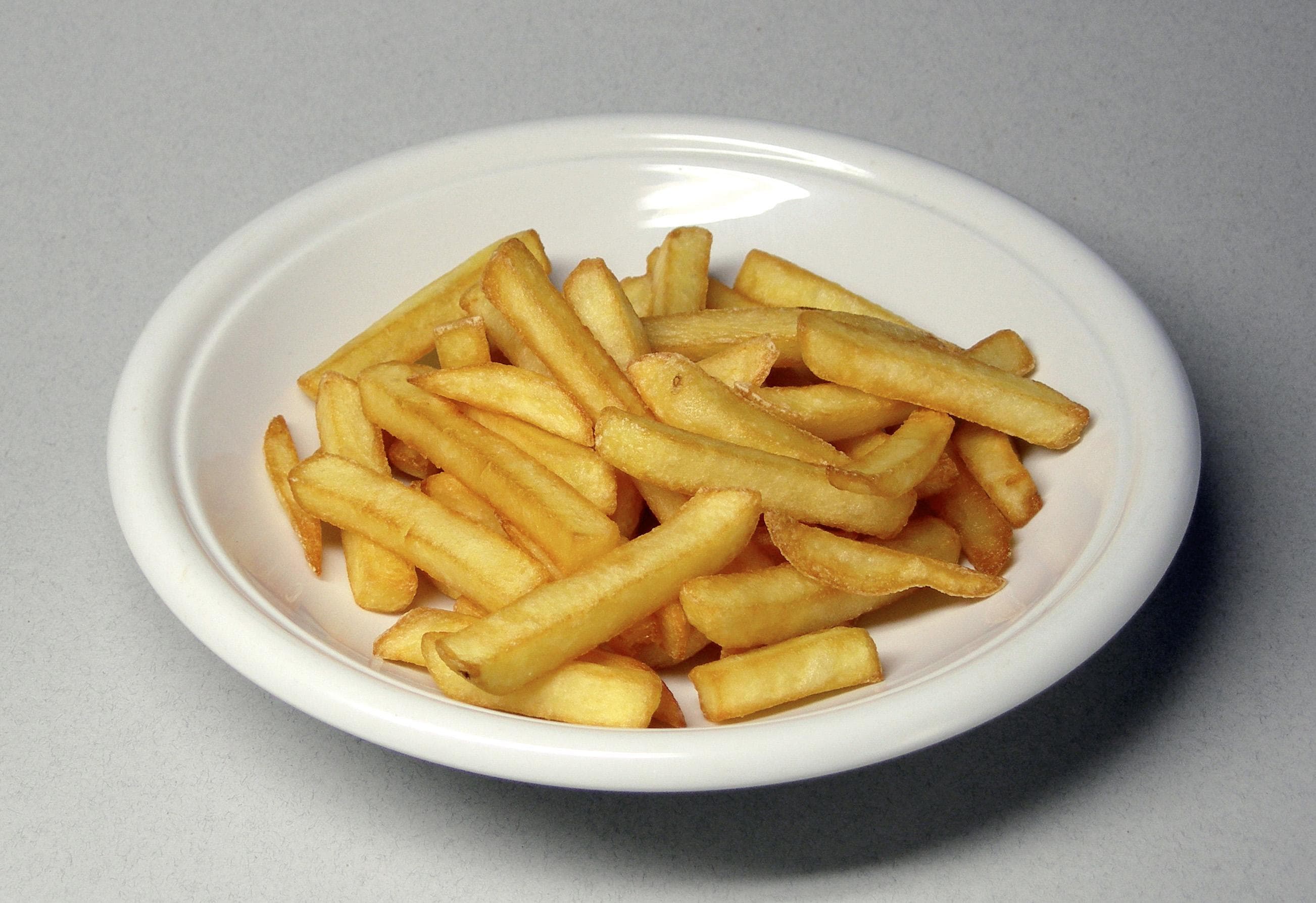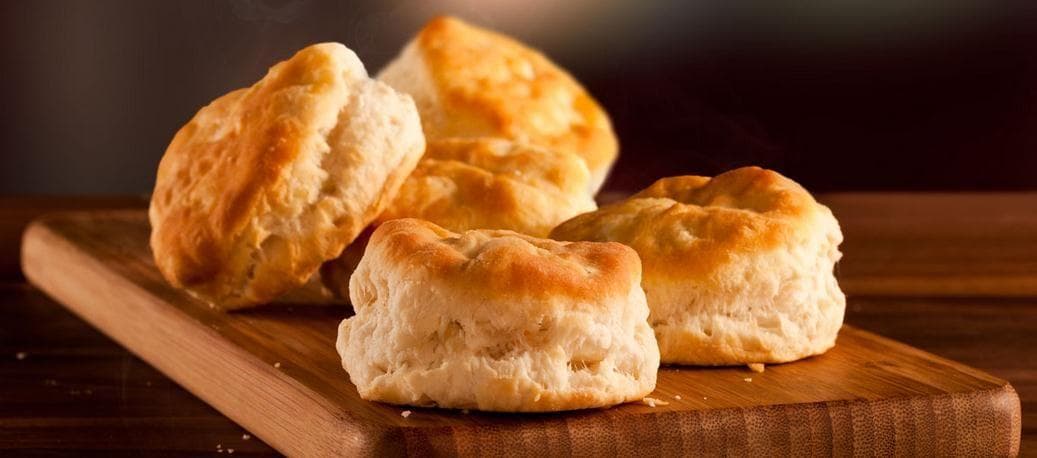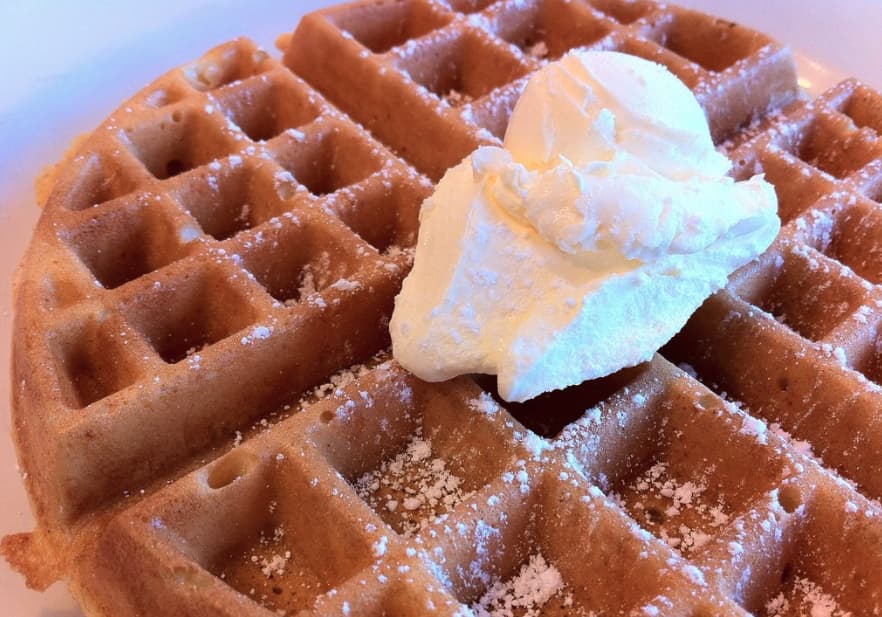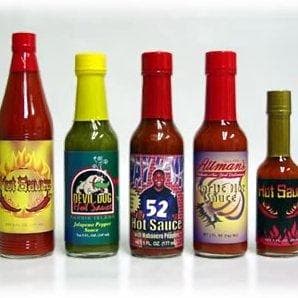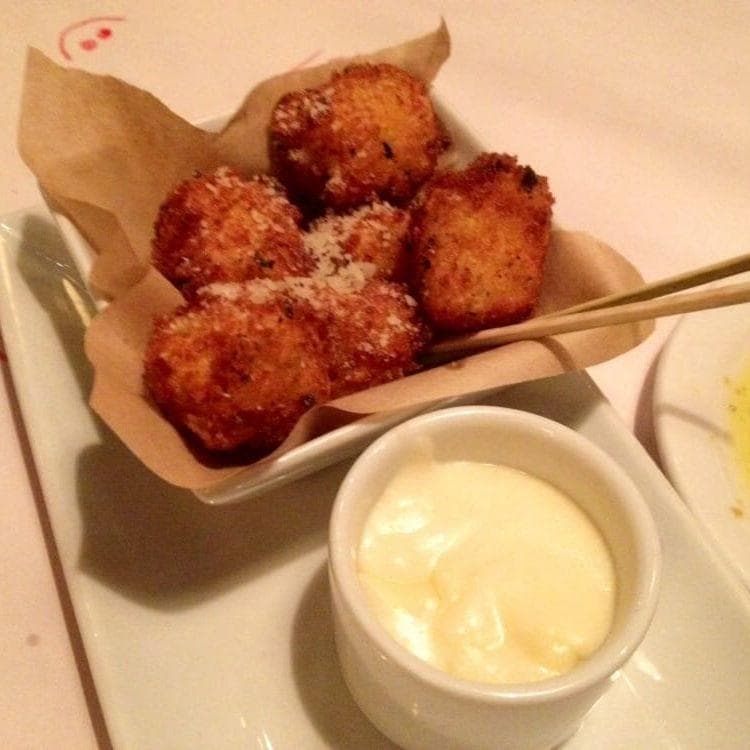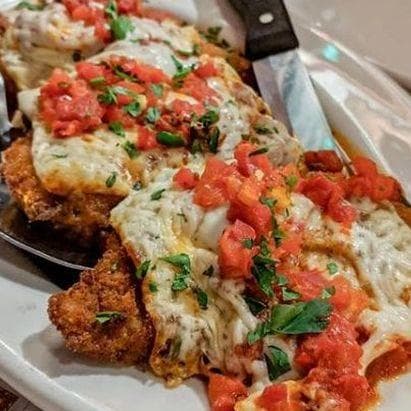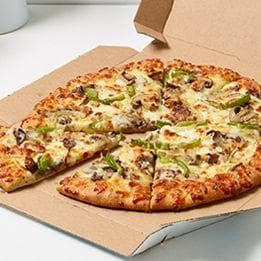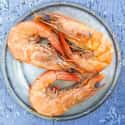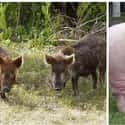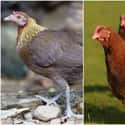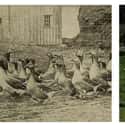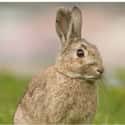-
(#1) Beef Cattle
Beef cattle have had what might be the most shocking transformation of breeding over the years. Today's cattle are descendants of the wild cattle of Chillingham, which were meticulously bred by British agriculturist Robert Bakewell in the 1700s for greater output of meat and muscle.
The modern Belgian Blues are one example of cattle being produced en masse for sheer size, bred to produce twice the usual amount of muscle seen in beef cattle. Nowadays, small cattle farms are fairly rare, having been primarily replaced with large factories where, controversially, the cattle are kept in small confines where disease spreads more quickly, increasing health risks. Dairy cattle have seen similar changes, with farmers selectively breeding for larger udders and higher milk production.
-
(#2) Turkey
- Meleagris
"Turkey-raising may well be one of the oldest forms of organized meat production in the Northern Hemisphere," according to the South Carolina Department of Natural Resources. Native American groups reportedly domesticated wild turkeys before the European colonists showed up in North America:
Turkey bones have been found in Indian burial mounds in Tennessee, Kentucky, and some other parts of the South, and turkeys were being raised in Mexico and Central America for more than 500 years before the Spanish arrived. Turkey relics have been found in Arizona dating as far back as 25 [CE].
But because of such excessive and long-term domestication, turkeys are also one of the best examples of how humans have enlarged farm animals over the years. In the 1930s, the average weight of a turkey was around 13.2 pounds. However, by 2014, it had more than doubled to 29.8 pounds. Many claim growth hormone injections have led to this impressive size evolution, but since the mid-20th century, the FDA has prohibited growth hormones in poultry.
"And they were never, ever used in turkeys," Francine Bradley, a poultry specialist in the Animal Science Department at UC Davis, told the LA Times.
-
(#3) Domestic sheep
- Ovis aries
Most sheep breeds are thought to have descended from the European mouflon. Robert Bakewell, who had a hand in developing several domestic species in the 1700s, bred the sheep for both meat and fiber production. Many sheep raised today are dual-purpose, which means they are raised for both their meat and different varieties of wool. Experts think their multifunctionality and "ability to adapt to local environments" are both reasons why sheep have become so essential to agricultural production through the ages:
Many of the characteristics in sheep breeds, such as tolerance to temperature variations, may be responses to climatic differences, such as day length, seasonality, UV and solar radiation, precipitation, and humidity.
At the same time, reports say lamb and mutton consumption in the United States decreased significantly after WWII. Harsh conditions and socialized perception both may be to blame, but sheep farmers in the modern day rely more on wool and other byproducts from sheep than meat.
-
(#4) Shrimp
Shrimp is the most widely consumed seafood in the United States, and many kinds of seafood are generally considered to be a healthy source of Omega-3s and other proteins. However, the shrimp-as-food seascape has changed a lot since the farming of shrimp began in Asia in the 1400s, where they were culled from small ponds and local ecosystems. In recent decades, farm sizes have grown exponentially, and modern technology is allowing farmers to produce much larger shrimp than they could find in the wild.
However, as journalist and author of Real Food, Fake Food Larry Olmsted pointed out, this is somewhat controversial since much of the shrimp is imported into the US without inspection or even adherence to any regulations; in seafood farms overseas, the creatures are reportedly often pumped with illicit substances. According to Olmsted:
Most of the shrimp raised on farms today live in actively managed ponds and are fed artificial food sources, all calculated to obtain maximum growth. Farmed shrimp are now on average much larger than shrimp caught in the wild, depending on the species.
A Government Accounting Office review of seafood fraud was highly critical of the FDA’s oversight of imported shrimp and found that after the FDA banned the import of Chinese-farmed shrimp in 2007, due to the presence of unapproved drugs, Chinese suppliers simply shipped the shrimp to Malaysia, relabeled it from there and imported millions of dollars’ worth of the drug tainted shrimp into the US anyway. Called “transshipment,” this happens with shrimp and seafood all the time.
-
(#5) Chicken
- Gallus gallus domesticus
Chickens bred for meat are known as broilers, and they generally have white feathers over their large, meaty bodies. The US Food and Drug Administration prohibits the use of added hormones in both pork and poultry, so those industries do not use artificial or added hormones in the production process.
However, some birds have become so heavily modified they have trouble walking around with all their extra body weight. They've become genetically selected to grow bigger, particularly with bigger breasts, as these are the most versatile and marketable parts of the chicken for food. As such, they're 80 percent larger than they were in the mid-20th century.
Today, they look almost nothing like their Asian ancestor, the Red Junglefowl - even though they're technically the same species.
-
(#6) Pig
- Sus
Modern-day domestic pigs are almost unrecognizable from their ancestors, which had wiry coats; were dark brown, gray, and black in color; and had long tusks. They were most likely domesticated 9,000 years ago in Asia. Today's farm-raised pigs are a non-threatening shade of pink (though some heritage breeds sport other colors), lack tusks, and are considerably larger. Pigs of all breeds have been bred for mass food production, yielding tender and fatty meat.
Though the FDA prohibits growth hormones in the development of pork, the Austin Chronicle reported that as the popularity of raising pigs for pork skyrocketed from Christopher Columbus's time onward in North America:
The trend was for developing herds that produced higher numbers of offspring and pigs that were leaner (resulting in better feed efficiency). Husbandry methods emphasized control of diseases caused by huge factory pig-raising techniques, introducing the use of prophylactic antibiotics. Pork had become "the Other White Meat."
-
(#7) Laying Chickens
Chickens were domesticated since 2,000 BCE. All the varieties descended from just four species found in the jungles of Asia, but today's chickens are bred to suit the needs of mass production. Though their meat-producing cousins are the ones who have been bred to have larger bodies, egg-laying hens have also ended up with much larger bodies - and much larger eggs - than their predecessors.
Though at first they reportedly selected hens for breeding based on weaning out disease, farmers soon realized they could maximize output of hens. The goal then became to develop super-chickens that rarely take breaks from egg-laying routines.
As a result, each modern hen lays around 200 eggs per year, whereas wild or roaming chickens lay only a handful once a year.
-
(#8) Salmonidae
- Salmonidae
Salmon has remained a popular food source, but in recent years, it's seen some significant changes in its qualities, including taste and aesthetic. Overfishing led to excessive farming of the fish, which then led to genetic modifications that could develop much larger animals than wild-growing species.
However, this quickly spiraled out of control in negative ways. John Vidal, a journalist for The Guardian, reported on a lecture by Don Staniford to the National Geographic Society about the problems with salmon farms in America:
Not only were fish farms getting bigger... they were also becoming reservoirs for infectious diseases and parasites. It was a shocking, revealing talk. I did not know that farmed salmon were fed partly on fishmeal and fish oil, often derived from ocean fish such as anchovies, herring, and sardines. Despite industry claims that industrial aquaculture feeds the world’s poor, it seemed that the big farms were adding to the pressure on the depletion of the oceans.
The FDA is now taking further measures to test and approve safer salmon-growing measures for consumption, so that the size of salmon does not come at a cost of fish or human health.
-
(#9) Goose
Geese were historically kept for a variety of reasons: their meat, feathers, eggs, and to be raised for foie gras - literally "fatty liver" in French. They were selectively bred over the years to grow much larger than their wild counterparts and bear fatty pads in their abdominal areas.
They were also bred to have white feathers - rather than brown - to walk in a more upright position and not be able to fly as well, which made them easier to keep.
-
(#10) Rabbit
All of the 60 recognized domestic rabbit breeds descended from the European rabbit. Spain was the original "land of rabbits"; when the Romans arrived in 200 BC, they began to domesticate them, raising the rabbits for their meat and fur. Selective breeding has led to some variations that look extremely different than the rabbit's ancestors; for example, lop rabbits have much longer, flopped-over ears, and Flemish Giants are the size of medium-to-large dogs.
With the spread of industrialization in the 19th century, people began moving to towns and cities and bringing rabbits with them as domestic pets, though they were merely bred for meat and fur up until then.
As showing rabbits became popular, the evolution of fashion and social trends greatly influenced breeding, causing some rabbit aesthetics to change dramatically. According to experts in rabbit history:
Apart from poultry, [rabbits] were the only "farm" animal to be practical to keep in town. Although many of these rabbits were bred for meat, it became increasingly common among the rising middle classes to keep rabbits as pets... Others were developed through cross-breeding, particularly with rabbits imported from other countries as a result of increasing travel in Europe. Many breed societies and clubs were established.
-
(#11) Pigeons
Charles Darwin used pigeons to test some of his ideas about evolution, and it was Darwin who discovered that all pigeons descended from a species called the Rock Dove. By Darwin's time, people in England were already selectively breeding pigeons for odd or "beautiful" traits, calling them "Fancy Pigeons," after they had spent hundreds of years raising or catching them for food. The fancy pigeons sport decorative feathers and come in a wide variety of colors.
Though many countries no longer include pigeon on the menu - the birds are sometimes referred to derogatorily as "rats with wings" due to their urban scavenging natures - they remain eccentric pets.
-
(#12) Domestic goat
- Capra aegagrus hircus
Goats were first domesticated by humans around 9,000 years ago - they were among the first recorded domesticated animals in history, along with cattle and sheep. Today, there are hundreds of goat breeds around the world, and the domestic breeds are raised for both meat and fiber.
Breeds like the Angora goat are highly valued for their mohair coats, while African breeds like the Boer goat are bulkier and raised exclusively for meat.
-
(#13) Horses
- Equus ferus caballus
Most people in North America don't think of food when they think of horses, but the animals were raised for meat around the world for centuries. Many countries in Europe and French Canada still consume horse meat regularly. Horses were selectively bred for many traits, depending on the region.
Because of this, horses now run the gamut from the miniature horse to the massive draft horse breeds like the Shire and Clydesdale. The oldest-known horse breed is thought to be the Arabian, which is squarely between those two extremes in terms of size. The Arabian is lean, known for its endurance abilities, and was an essential part of life for the nomadic Bedouin people.
-
(#14) Oyster
Oysters continue to change to fit the needs of humans. They're being bred to be far larger and to not waste energy producing gametes - eggs and sperm - which, of course, renders them mostly infertile. "Triploid oysters" are the creation of aquaculturist Standish Allen, who runs the Aquaculture Genetics and Breeding Technology Center at William & Mary’s Virginia Institute for Marine Science.
These oysters have three pairs of chromosomes instead of the usual two, which is why they don't produce gametes. The triploid oysters grow much faster and larger than natural oysters, making them ideal for food production.
They also grow nicely year-round, while natural oysters tend to be a little off in the summer months.
New Random Displays Display All By Ranking
About This Tool
We all know that evolution is a very long process, at least it takes more than a thousand years. However, this situation was completely changed after the rise of human beings. Since humans began to domesticate animals, they have made certain animals different from their ancestors through selective mating in captivity, finally, these animals can be delicious food bred by humans who control their reproduction and breeding.
The random tool introduced 14 common animals in our daily life what how they look like before becoming foods of humans. Human activities have affected the habitat of animals and even changed their living habits, eventually leading to their evolution into what is familiar to humans.
Our data comes from Ranker, If you want to participate in the ranking of items displayed on this page, please click here.



